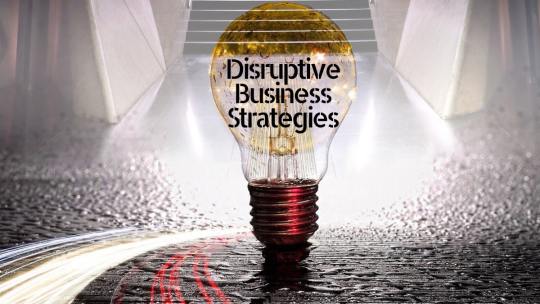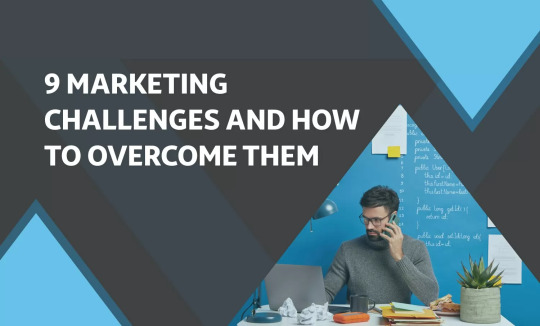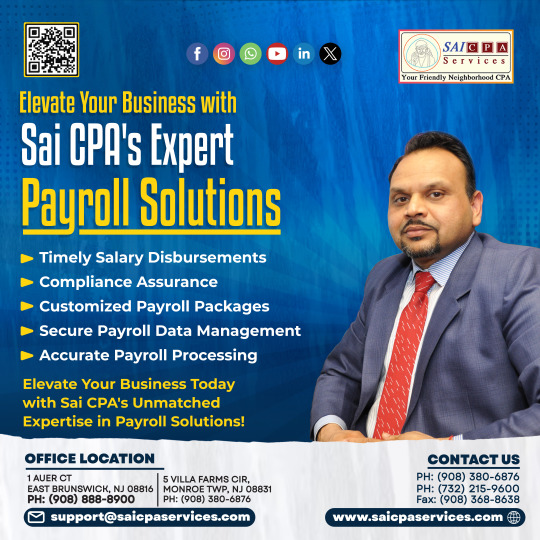#Competitive advantage
Explore tagged Tumblr posts
Text
Disruptive Business Strategies: Innovate, Compete, and Succeed
Disruptive business strategies are innovative approaches that challenge the status quo of the industry and introduce new products, services, or business models that change the way things are done. Here are a few examples of disruptive business strategies that have expanded businesses worldwide: Uber: Uber is a ride-sharing service that disrupted the traditional taxi industry. Instead of owning a…

View On WordPress
#agile development#business competition#business leadership#business strategy#business success#business tips#competitive advantage#competitive edge#creative culture#emerging trends#grow business#industry norms#innovation#market disruption#market opportunity#marketing#technology#user experience
2 notes
·
View notes
Text
9 MARKETING CHALLENGES AND HOW TO OVERCOME THEM

Marketing can be complicated. Whether you’re just starting out or have been in the game for years, the reality is that marketing strategies come and go and continually change. In a time when businesses are trying to utilize every single channel available to acquire new customers — from social media to paid ads to content marketing — it can be hard to know how to fit it all into your daily work and still maintain a quality level of service for your current customers. Big marketing challenges are what all businesses face at one point or another. But with the right tools and strategies, you can turn a problem into an opportunity. In this article, we’ll cover some of the top marketing challenges business owners face today and how you can successfully overcome them.
LEAD GENERATION
According to a survey by Inbound, the main challenge for modern marketers is generating traffic and leads. The increasing competition exacerbates this situation even more. It’s worth considering the huge variety of platforms for promoting goods and services, which can make it really difficult to choose the right direction and concentrate efforts on it.
What should you do?
Create high-quality and in-demand content for your target audience. Surveys show that more than 40% of consumers crave video content, while only 20% prefer to read blogs. Do all marketers know what kind of content their customers want? Do they create truly engaging content? If you’re able to create content that sparks user interest, it’s important to promote it effectively so that users notice it. Nowadays, due to the abundance of content on the internet, it’s not easy to compete for consumers’ attention, but if you keep up with trends and experiment with formats, you’ll succeed as a marketer.
ACHIEVING ROMI
Marketing ROI or return-on-marketing-investment (ROMI) is a sub-metric of ROI that measures the efficiency of a marketing campaign for the purpose of assisting better decision-making for future investments.
The issue of the cost-effectiveness of marketing and promotional expenses has become increasingly important in recent years, as evidenced by survey data. Tracking and ensuring ROMI can be an even more challenging task if there is a lack of in-depth analysis of the effectiveness of each channel and each marketing activity, as well as a lack of information sharing between different departments within a company.
After all, achieving ROMI largely depends on directing resources towards the most conversion-focused channels, which is impossible without analyzing data and metrics.
What should be done?
Firstly, it is important to improve the interaction between the marketing and sales departments. Implementing software such as CRM systems to increase sales and analyze data can help identify weaknesses and strengths in business processes and find areas for growth. Tracking traffic sources and lead conversions into sales provides a clear understanding of whether your marketing is working or not, and whether budgets are being spent correctly.
According to surveys of marketers, the most effective strategy is inbound marketing in combination with SLA (Service Level Agreement) (the company’s approach to organizing IT processes).
Recall that inbound marketing includes SEO, social media branding, blogging and various internet platforms, podcasts, videos, and other types of content marketing. The inbound marketing strategy is based on the need to generate interest among consumers.
BUDGET SIZE
Another challenge is justifying the expense on marketing promotion, which marketers are forced to defend. This is especially relevant for small companies.
How to solve it?
Measure ROMI. Analyze the effectiveness of advertising channels. The key to ensuring sufficient expenditure on promotion is measuring ROMI. Marketers surveyed cite measuring ROMI as the key to ensuring sufficient expenditure on promotion. On average, specialists who work with measuring the effectiveness of marketing investments have a budget that is 180% higher.
IM4U Marketing Agency was approached by a client who, with a fairly large marketing budget, had almost no results. We began by reviewing the client’s business goals and current marketing budget. Then we identified areas where the client could optimize their budget by reallocating funds or using more cost-effective marketing channels. Finally, IM4U Marketing Agency created a customized plan that maximized the client’s budget to achieve their desired outcomes while minimizing costs. We were continuously monitoring the campaign’s performance and adjusted the plan as needed to ensure the client gets the most out of their marketing budget.
INCREASING WEBSITE EFFECTIVENESS
Another problem is creating a truly effective website that not only attracts visitors, but also converts them into customers and achieves financial goals. The problems that marketers solve in this process can be quite diverse, such as how to create and optimize content or how to develop an emotionally engaging design.
What is the solution?
It is important to optimize the site’s loading speed and ensure its adaptability to mobile platforms. If your problems are due to a lack of necessary specialists and finances, know that there are many marketers like you. This problem is particularly common in small firms. Hire a freelancer or consult a small, responsible agency. Marketing channel integration platforms can also help simplify a range of website improvement tasks.

CHOOSING TECHNOLOGICAL SOLUTIONS
Reviews, case studies, and reports can help marketers choose suitable software and platforms to implement their daily tasks. However, these reviews are often conflicting, which can make the choice more difficult.
What can be done?
Seek advice from friends, colleagues, and professionals, and closely examine all video reviews and case studies on working with various tools. The trial period for many services allows for a deeper understanding of the product and how it can solve your specific problems – do not overlook this opportunity.
Marketing automation using online platforms is designed to simplify your work. The survey showed that about 40% of marketers are already using more than 2 services and will continue to do so in the future.
THE PROBLEM OF CONTENT TARGETING
A crucial aspect of marketing is precise targeting. Marketers know that by relying on detailed buyer personas, they can conduct successful advertising campaigns with high conversion rates. Study your target audience as well to achieve success in your marketing campaigns.
More information in our article “How to improve your PPC Ads – 8 advice you didn’t know”.
THE DEVELOPMENT OF AI
Certainly, the development of AI represents a significant challenge for marketers today. On the one hand, AI tools, such as ChatGPT, Midjourney, Jasper can offer great benefits, such as increased efficiency, more accurate data analysis, and faster decision-making. On the other hand, integrating AI into existing marketing processes and workflows can be a complex task that requires significant planning and preparation.
How to overcome?
To overcome this challenge, marketers need to invest in training and education to ensure that they have the skills and knowledge necessary to use AI effectively. Additionally, marketers need to work closely with IT and data teams to develop new systems and processes that can integrate AI tools into existing workflows. Finally, marketers need to be mindful of the ethical implications of using AI in their work and ensure that they are using these tools in ways that are transparent, ethical, and respectful of customer privacy. With the right approach, however, AI can be a powerful tool that helps marketers to achieve their goals more efficiently and effectively.
RECRUITING TALENTED SPECIALISTS
Demand for technically advanced and creative marketers in the job market today exceeds supply like never before. Talented specialists are needed by everyone, and searching for the right fit for your company can take months, while the work needs to be done now.
How to solve?
Create attractive conditions, taking into account that maintaining a balance between professional and personal lives is important for 69% of job seekers, while 41% are focused on career progress.
Also, growing specialists within your own company can help you solve this problem. Training and mentoring by experienced professionals can promote the development of diverse skills in key employees, to apply them in your work. This takes time and resources, so choose and train the most capable and eager ones.
FALSE PROMISES NEGATIVELY AFFECT BRAND ATTRACTIVENESS
Companies like Allstate Insurance and Avis Car Rental have set themselves on the path to inevitable failure by using enticing slogans and appeals. Meanwhile, their services never lived up to their grand promises. While Allstate promises “You’re in good hands with Allstate”, their customers are far from convinced. On the ConsumerAffairs website (which publishes consumer ratings for various companies), this insurance company has a rating of 3.7 out of 5. Avis’ slogan “We try harder” is also far from the truth, with a rating of 3.2 out of 5.
How to solve?
Perhaps a clever slogan can serve as a means of attracting new customers to your store or website, but it’s important to remember that customers need concrete actions, not pretty words. If a visitor can’t find what you promised them, all your efforts will go to waste. So let’s only make promises that we can keep in order to effectively manage consumer expectations and loyalty.
CONCLUSION
In conclusion, marketing is a constantly evolving field, and the challenges faced by marketers are diverse and complex. However, with the right strategies and techniques, these challenges can be overcome. Brands need to focus on building a strong online presence, creating meaningful and authentic connections with customers, leveraging data and technology to gain insights and drive decision-making, and nurturing talent within their organization. By keeping up with industry trends and being adaptable, marketers can succeed in navigating the ever-changing marketing landscape and achieving their business goals.
LET IM4U DIGITAL MARKETING AGENCY HELP YOUR BUSINESS TO BUILD SUCCESSFUL MARKETING STRATEGY
Unlock Your Business’s Digital Potential with IM4U Marketing Agency! Our agency is ready to help you. For more information, book a consultation, and we’ll help you build a successful marketing strategy.
#marketing challenges#overcoming obstacles#marketing strategies#business growth#customer engagement#digital marketing#target audience#branding#competitive advantage#market research#marketing trends#social media marketing#content marketing#lead generation#conversion optimization
3 notes
·
View notes
Text
Beyond the Badge: 4 Sustainable Competitive Advantages for Police Agencies in Providing Public Safety and Security
A sustainable competitive advantage is a unique attribute or capability that allows a company or organization to outperform its competitors in the long run. What companies do you think hold a significant sustainable competitive advantage? Why does competitive advantage only get mentioned in the business world though? In the case of a police agency, a sustainable competitive advantage can work the same way as it does for a business but provide a different outcome. For a police department you want your competitive advantage to be a unique attribute or capability that allows the agency to provide better safety and security services than its competitors over the long run. Same idea as a business, just a different outcome. Here are some examples of sustainable competitive advantages that a police agency can have:
Advanced technology and data analytics: A police agency that invests more in advanced technology and data analytics can have a sustainable competitive advantage in terms of crime prevention and resolution. In an article by Sintelix they talk about two crucial analytical tools that help police officers. One is predicting and monitoring crime locations and the other is criminal identification. Through various databases, web/social media data, and other factors cops can use advanced technology to predict locations of where crime may appear next or prevent a crime from ever happening. If you invest in advanced technology and data, you also can have better identification systems that can detect the face of a criminal and allow the police to arrest the person. All in all, analytics and better technology will set your department apart from the rest.
What ways do you think Police officers can benefit from advanced technology and data analytics that are different than the ideas listed above?

2. Specialized units and expertise: A policy agency that has specialized units and expertise coming from different areas can have a sustainable competitive advantage over other agencies because it can provide a higher level of service in specific areas that smaller/other agencies can’t. For example, if you have units that focus on counterterrorism, bomb squads, drug enforcement, SWOT, cybercrime, etc. you can prevent more crimes from happening and this allows for more job opportunities in your department. It also allows people that have knowledge in certain areas to do a job they have trained for in order to make sure everything goes smoothly. Are there any specialized units you think police should invest more into?
Picture via: City of Sacramento

3. Leadership and Management: Policy agencies that have effective leadership and management can create a work culture that is focused on excellence which can lead to better public safety. It is important to have a leader that officers want to work for and will follow their orders. This allows for the best overall safety for your town/city/state and the most efficient way to handle the prevention of crime. A great leader/upper management can also be a sustainable competitive advantage as other agencies will try to copy what you do, but they won’t be able to do the same because they don’t have your Chiefs, Sergeants, Commanders, Captains, etc… This really sets your department apart from the rest and can lead to your agency becoming very competitive/a prestigious department to work for.
4. Community-based Policing/Events: A police agency that has strong ties with its community and engages in community-based policing can build trust and credibility in the community. What ways does your local police agency interact with the public? A strong tie within the community is a sustainable competitive advantage as it allows for better cooperation, can help prevent crimes, better resolutions to problems, and it is difficult for other agencies to replicate the relationship you have within your own community. Where I grew up our local police department did a lot with our community and as a result people were friendly with the police and the crime rate around me was low. It pays to have a good relationship with the people you are going to protect/save!
A police agency can have a sustainable competitive advantage through their technology and analytics, having specialized units, good leadership, and community-based policing. Especially in today’s world, law enforcement agencies must create a positive perception among the public to increase trust and cooperation. This is the reality due to the tendency of the mainstream media to exaggerate or in most cases choose very select incidents, which shine a negative light on police officers. There is a saying "All Cops Are Bad," but do you think this is true? Agencies are reconstructing their forces and if they implement these ideas they can have a significant competitive advantage over their peers!
In what ways can law enforcement agencies change their perception?
3 notes
·
View notes
Text
The system is moving. Not just AI, not just business—intelligence itself is in play.
#AI Governance#Business Intelligence#Competitive Advantage#Cybersecurity Strategy#Data-Driven Strategy#digital transformation#Ecosystem Architecture#Ecosystem Orchestration#Emerging Technologies#future of work#GTM Innovation#hidden layer strategy#Intelligence Fabric#leadership#Monetization Strategies#Networked Intelligence#Non-Linear Value Creation#Preemptive Strategic Foresight#Silent Influence#silent influence in business#Strategic Inflection Point#Strategic Intelligence#System Design
0 notes
Text
Top Reasons Why You Are Losing Top Talent to Competitors
Losing top talent to competitors can be detrimental to your business's success. This article explores the key factors that might be causing your best employees to seek opportunities elsewhere. From inadequate compensation to poor company culture, we break down the most common reasons why talented professionals are leaving—and how you can address these issues to retain your best team members and stay competitive in the talent market. For more insights, check out this detailed article on why you're losing top talent.
#Employee Retention#Talent Management#Competitive Advantage#Employee Satisfaction#Recruitment Strategies#Company Culture#Talent Acquisition#Workforce Development#Retaining Top Talent#Employee Engagement
0 notes
Text
Technology Essentials for Travel Agencies: How Professional IT Support Drives Your Business Forward
Introduction Creating dream vacations is your passion, but managing the technology that powers your business shouldn’t be an additional burden. This guide outlines how the right technology partner can help your travel agency enhance client experiences, streamline operations, and stand out in a competitive marketplace. Common Technology Challenges Travel Agencies Face Before exploring solutions,…
0 notes
Text
dominate the market with AI Video Generation
dominate the market with AI Video Generation
0 notes
Text
The Power of AI in Modern Ecommerce
A New Era of Ecommerce and Online Shopping The ecommerce landscape is constantly evolving, and Artificial Intelligence (AI) is at the forefront of this metamorphosis. From personalized recommendations to predictive analytics, AI is revolutionizing how businesses interact with customers and operate in the digital marketplace. 1. Personalized Recommendations: A Tailored Experience Gone are the days…
#Artificial Intelligence (AI)#Chatbots#Competitive Advantage#Customer Segmentation#Dynamic Pricing#Fraud Detection and Prevention#Logistics and Delivery#Online Shopping#Predictive Analytics
0 notes
Text
The Green Manufacturing Revolution: Finance as an Enabler for Sustainable Industry
Discover sustainable manufacturing with Siemens Financial Services! Madlen Junker shares insights on innovative financing, digital twins, and green energy solutions. Learn how to reduce carbon footprint and gain competitive edge. #SIEX #Sustainability
The industrial sector stands at a critical juncture, contributing to one-quarter of all energy-related CO2 emissions. However, innovative financing solutions are emerging as key enablers for sustainable manufacturing transformation, as revealed in this interview with Madlen Junker, Financing Solution Partner for Digital Industries at Siemens Financial Services. Strategic Imperatives for…
#Carbon Footprint#competitive advantage#decarbonization#digital industries#Energy efficiency#financing solutions#green technologies#Siemens#Siemens Financial Services#sustainable manufacturing#talent attraction
0 notes
Text
Crafting a Value Proposition that Resonates with Your Audience
Create a value proposition that connects! Learn how to highlight your unique benefits and solve customer pain points to build a message that drives engagement. #MarketingTips
Crafting a Value Proposition that Resonates with Your Audience Written By: that Hannah Jones Time to Read: 5 minutes A value proposition is a promise of value to your customers. It explains why they should choose your product or service over a competitor’s and how you can meet their needs better than anyone else. A strong value proposition speaks directly to your audience’s problems and…
#audience connection#audience-focused marketing#brand consistency#brand differentiation#brand messaging#brand positioning#brand promise#brand value#building brand loyalty#business branding#business value#competitive advantage#content marketing ideas#content marketing strategy#crafting a value proposition#crafting brand identity#customer engagement#customer pain points#customer-centered marketing#customer-focused content#Digital Marketing Tips#effective messaging#improve engagement#marketing clarity#marketing for businesses#marketing strategy#unique selling points#value proposition examples#value proposition tips#value-focused content
0 notes
Text
Enhance Financial Accuracy with SAI CPA Services' Payroll Solutions

Welcome back to the SAI CPA Services blog! Today, we’re highlighting how our payroll services can improve financial accuracy and streamline operations for your business.
The Importance of Professional Payroll Services
Managing payroll is one of the most critical yet complex tasks for any business. Here’s how our professional payroll services can benefit your business:
Accurate Payroll Processing: Timely and precise payroll processing is essential to maintain employee satisfaction and avoid legal issues. We ensure that your employees are paid accurately and on time, every time.
Compliance with Regulations: Payroll involves navigating a web of federal, state, and local regulations. Our experts stay up-to-date with the latest laws to ensure that your payroll processes comply with all relevant regulations, reducing the risk of penalties.
Time and Cost Efficiency: Outsourcing your payroll management to professionals allows you to save time and reduce overhead costs. We handle all aspects of payroll, freeing up your resources to focus on growing your business.
How SAI CPA Services Can Help
At SAI CPA Services, we provide comprehensive payroll solutions tailored to your business needs. Our services ensure accuracy, compliance, and efficiency, allowing you to manage your payroll with confidence and ease.
Connect Us: https://www.saicpaservices.com https://www.facebook.com/AjayKCPA https://www.instagram.com/sai_cpa_services/ https://twitter.com/SaiCPA https://www.linkedin.com/in/saicpaservices/ https://whatsapp.com/channel/0029Va9qWRI60eBg1dRfEa1I
908-380-6876
1 Auer Ct, 2nd Floor
East Brunswick, NJ 08816
#Sai Cpa Services#strategic planning#business growth#competitive advantage#business model#financial services#cpa#new jeresy#accounting#bookeeping#tax services#business#strategies#startup#enterprenuership#business plan#tax compliance#revenue
1 note
·
View note
Text
Unlock the potential of your data with Vast Edge’s advanced analytics services. We provide insights that drive better business decisions and help you stay competitive.
#Data analytics#business intelligence#data-driven insights#predictive analytics#competitive advantage
0 notes
Text
How to Effectively Merge PPC and SEO Without Overspending?

I never thought I'd crack the code of online marketing. My small business was struggling, lost in the vast digital landscape.
Then it hit me - why not combine PPC and SEO?
Day one, I started researching. Google Ads became my new best friend.
I crafted compelling ad copy, targeting keywords like "affordable local services" and "best [my industry] near me". Simultaneously, I optimized my website for these same phrases.
The results? Shocking. Within a week, my click-through rate jumped by 35%. But here's the kicker - my organic traffic also surged by 20%. The synergy was real.
I dug deeper. Analyzing my PPC data, I discovered long-tail keywords I'd never considered. "24/7 emergency [my service] in [my city]" became a goldmine. I incorporated these into my content strategy, creating blog posts and landing pages.
Suddenly, I was ranking for terms I'd never dreamed of.
My bounce rate plummeted from 65% to 40%. People were finding exactly what they needed.
But it wasn't all smooth sailing. My ad spend initially skyrocketed. Panic set in. Was I hemorrhaging money?
That's when I had my eureka moment.
I used my SEO insights to refine my PPC strategy.
By focusing on high-converting organic keywords, I slashed my cost-per-click by 25%.
Now, my website is a powerhouse. Organic traffic feeds my remarketing campaigns. PPC data informs my content creation. It's a beautiful, cost-effective cycle.
The result? My online visibility has doubled. Sales are up 50% year-over-year. And the best part? My marketing budget hasn't increased a dime.
What strategies have you used to integrate PPC and SEO? Share your experiences in the comments!
Get Tips, Suggestions, & Workarounds, in 2-3 mins, on How to Effectively Merge PPC and SEO Without Overspending?
#ppc#seo#digital marketing#online visibility#keyword research#ad copy#content strategy#remarketing#cost-per-click#organic traffic#conversion rate#landing pages#google ads#long-tail keywords#marketing budget#website optimization#click-through rate#bounce rate#search engine rankings#paid advertising#organic search#target audience#ROI#analytics#competitive advantage#marketing ROI#brand awareness#customer acquisition#lead generation#SubhamDas
0 notes
Text
Gain the competitive advantage with PRM. Maximize your potential with our powerful Partner Relationship Management solution.
0 notes